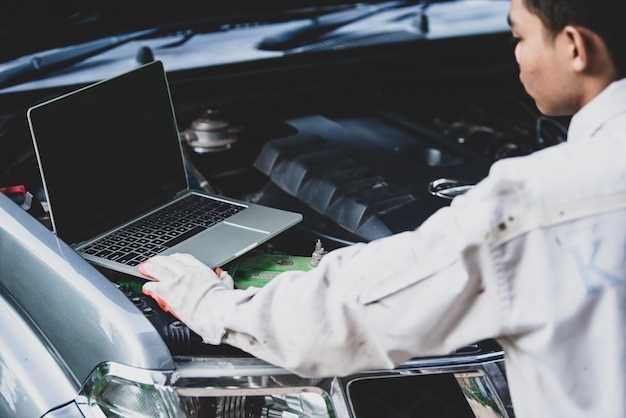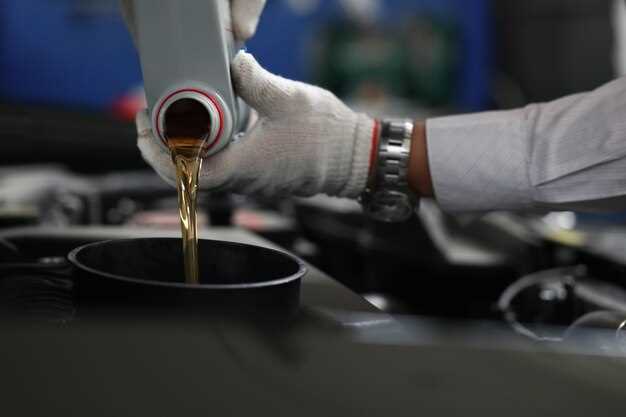
Proper vehicle maintenance is crucial for ensuring optimal performance and longevity. One of the most important aspects of routine maintenance is the regular inspection of various fluids that play a vital role in your vehicle’s operation. Neglecting these fluids can lead to significant problems and unexpected repair costs.
Among the key fluids that require attention are engine oil, coolant, transmission fluid, brake fluid, and power steering fluid. Each of these fluids serves a specific purpose, contributing to the overall health of your vehicle. Regularly checking their levels, quality, and condition can help prevent issues before they escalate.
In this article, we will explore the significance of each fluid and provide guidance on how to perform an effective inspection. Understanding the role of these fluids not only enhances vehicle reliability but also improves safety on the road.
Key Fluids to Check During Routine Motorcycle Maintenance
Regular inspection of key fluids is essential for maintaining the performance and longevity of your motorcycle. Here are the vital fluids you should monitor during routine maintenance:
- Engine Oil:
Engine oil lubricates the engine components, ensuring smooth operation and reducing wear. Check the oil level frequently and replace it based on the manufacturer’s recommendations.
- Coolant:
The coolant helps regulate the engine’s temperature. Inspect the coolant level, and look for any leaks in the system. Replace it according to the service interval specified in the owner’s manual.
- Brake Fluid:
Brake fluid is crucial for the braking system’s efficiency. Check the fluid reservoir and ensure it is at the correct level. Old or contaminated brake fluid should be replaced to maintain optimal braking performance.
- Transmission Fluid:
Transmission fluid lubricates various parts of the transmission system, contributing to smooth gear shifts. Inspect the fluid level and condition regularly, topping off or replacing it as necessary.
- Final Drive Fluid:
For motorcycles with a shaft drive, the final drive fluid is essential. Check the fluid level and change it according to the manufacturer’s guidelines to ensure efficient power transfer from the engine to the wheels.
In conclusion, regular fluids inspection plays a vital role in ensuring your motorcycle runs smoothly and safely. Develop a routine to check these fluids and follow the maintenance schedule recommended by your motorcycle’s manufacturer.
Engine Oil: Understanding Viscosity and Change Intervals

Engine oil is a critical component in maintaining the smooth operation of your motorcycle. It lubricates moving parts, reduces friction, and helps cool the engine. Understanding viscosity is essential for selecting the right oil and ensuring optimal performance.
Viscosity refers to the thickness of the engine oil and its resistance to flow at different temperatures. It is typically represented by two numbers, such as 10W-40. The first number indicates the oil’s viscosity at low temperatures (the “W” stands for winter), while the second number reflects its viscosity at higher temperatures. This classification helps ensure that the oil maintains proper lubrication in varying conditions.
Regular inspections are vital in determining when engine oil should be changed. Factors such as riding conditions, mileage, and oil type can influence change intervals. While the owner’s manual provides specific guidelines, general recommendations suggest changing oil every 3,000 to 5,000 miles for most motorcycles. However, if you frequently ride under extreme conditions or utilize synthetic oil, intervals may vary.
| Condition | Change Interval |
|---|---|
| Normal Riding | 3,000 – 5,000 miles |
| Frequent Short Rides | 2,000 – 3,000 miles |
| Extreme Conditions | 1,000 – 2,000 miles |
| Synthetic Oil | 6,000 – 7,500 miles |
Regularly checking the oil level and condition can help you avoid potential engine damage. Dark or gritty oil indicates that it needs to be changed, while a low oil level can lead to insufficient lubrication. Using the correct viscosity and adhering to change intervals will ensure your motorcycle runs efficiently and prolong its lifespan.
Coolant: Identifying Leaks and Proper Mix Ratios

For every motorcycle owner, ensuring optimal performance involves regular inspection of essential fluids, with coolant being one of the most critical. Properly functioning coolant regulates engine temperature, preventing overheating and potential damage.
Identifying leaks in the coolant system is vital. Start by examining the ground beneath your motorcycle for any signs of liquid puddling. Coolant typically has a distinct color, often green, orange, or pink, and may have a sweet smell. Check radiator hoses, the water pump, and connections for wetness or corrosion. Regularly inspect the coolant reservoir; if the fluid level is consistently low, this may indicate a leak that requires attention.
Another crucial aspect is maintaining the correct coolant mix ratio. Most manufacturers recommend a 50/50 mix of coolant and distilled water, which offers optimal protection against freezing and boiling. A diluted mix can lead to engine overheating, while an incorrect concentration can compromise corrosion resistance. Always refer to your motorcycle’s manual for specific guidelines pertaining to your model.
Regularly monitoring coolant levels, inspecting for leaks, and adhering to recommended mix ratios ensures the longevity of your motorcycle’s engine and smooth operation during rides.
Brake Fluid: Testing for Contamination and Level Checks
Brake fluid is a crucial fluid in any vehicle’s braking system, as it plays a vital role in ensuring safety and performance. Regular inspection of brake fluid levels and quality helps maintain optimal braking efficiency and prevents potential failures.
To begin with, it is essential to check the fluid level in the reservoir. Most vehicles have a transparent reservoir, allowing for easy visual inspection. The fluid level should be between the minimum and maximum marks. If the level is low, it may indicate a leak or wear in the braking system, necessitating further inspection.
In addition to checking the level, testing for contamination is equally important. Brake fluid can absorb moisture over time, which can lead to decreased boiling points and corrosion within the braking system. One common method for testing contamination is to use a moisture meter, which measures the water content in the fluid. Ideally, the moisture level should be below 2%. A higher level suggests the need for a fluid flush and replacement.
Another effective way to assess brake fluid quality is by observing its color. Fresh brake fluid is typically clear or light amber. If the fluid appears dark or murky, it may contain contaminants and should be changed promptly. Regular fluid inspection helps ensure that the braking system functions correctly and that the vehicle remains safe on the road.
In conclusion, routine checks of brake fluid levels and quality are essential components of vehicle maintenance. By conducting these inspections, drivers can detect issues early and avoid costly repairs while ensuring their safety and that of others. Regular maintenance of all key fluids, including brake fluid, is indispensable for a well-functioning vehicle.





